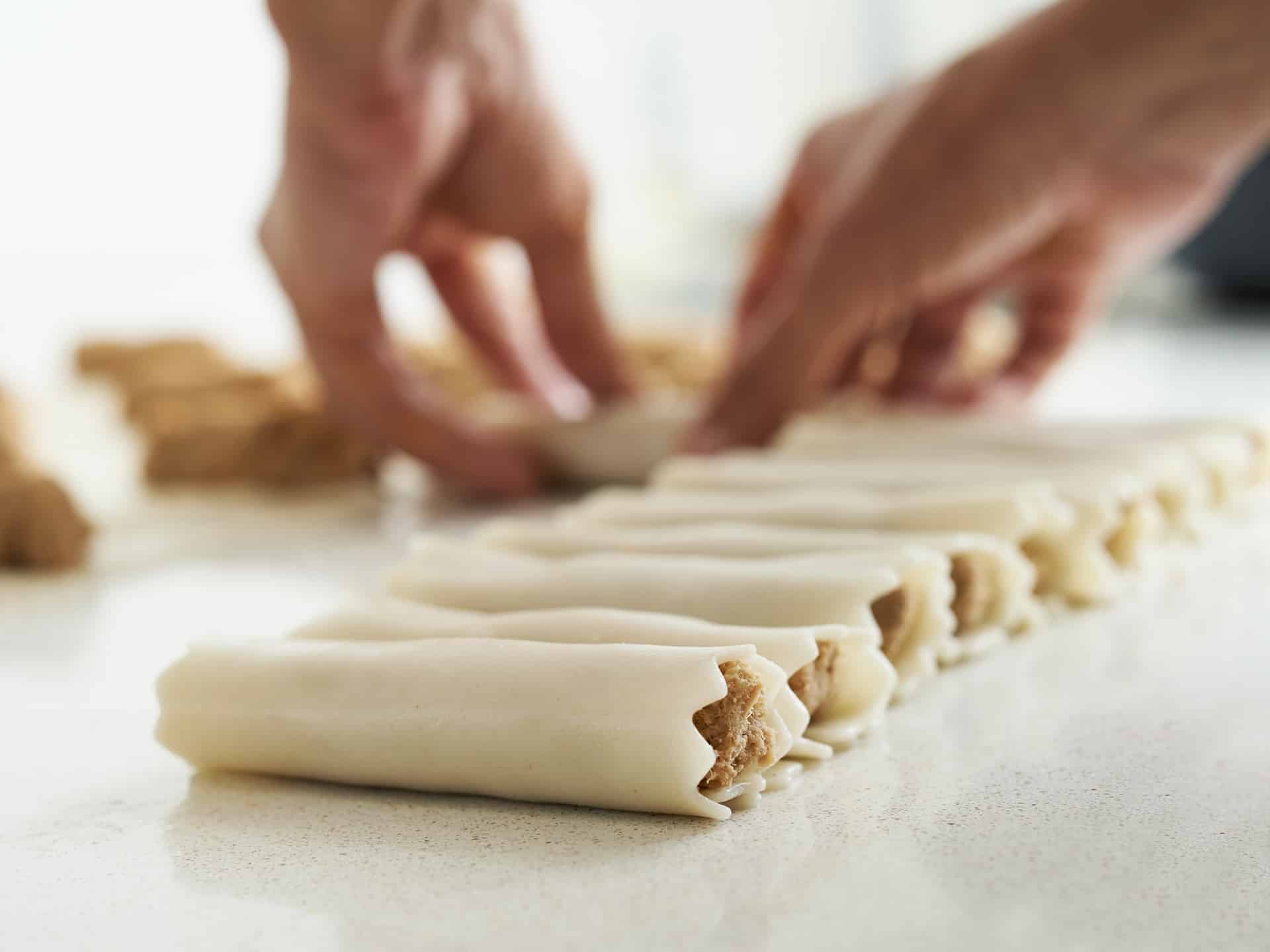
Improvising with food every day is a bad ally of healthy and sustainable eating, as well as disastrous for our pocket. On the contrary, organize the weekly menu in advance and do the shopping based on that plan, it is the easiest way to eat in a varied way throughout the week, make good use of everything we have in the pantry and thus avoid waste . of food.
Plan the weekly menu
Planning requires a minimum of time, but pays off in health and money. Block out a time on a weekday when you have no other chores, grab a pen and paper, or make a spreadsheet on your favorite digital device, and plan your weekly meal plan wisely. Many people prefer to plan weekly meals on Sunday afternoons, as it is usually a day without rushing and with a clear perspective of what the week is going to be like.
Your weekly meal planning table will have four columns. The first will be for the days of the week. The second, for the menus. The third, for the number of diners. And the fourth, the list of necessary ingredients.
- Write down meals and dinners, even if you don’t make them at home.. It will help you plan a light dinner if that day you know you will eat at a restaurant that offers generous portions. Or to avoid having the batch cooking lunch box on the day you have a work lunch.
- Calculate how many diners there will be each day. Count on the days when a family member has dinner out, or friends stay for dinner. Or if the children come to school.
- Create the menu for lunches and dinners.. If lunch is going to go in a lunch box to the office, think about dishes that are easy to transport and, where appropriate, to freeze and defrost.
- Don’t forget the breakfasts. If you have something mid-morning and snack, write that down too. Think about what foods you usually eat at that time: yogurt, milk, fruit, toast, peanut butter…
- Break down the ingredients for each menu.. The more accurate the calculation is, the better we will adjust the purchase.
- Make the shopping list. Add up the ingredients you need to meet that meal schedule, but check the refrigerator, freezer, and pantry first, in case you already have any of them. This way you won’t forget anything and you will take advantage of what you already have.
- Save your list for more occasions. If you make a list a week, you will have weekly food menus for the whole year and you will be able to reuse it many more times, observing the logical variations of the seasonal product (for example, replacing peaches in July with oranges in December or strawberries in April). .
Tips for doing the weekly shopping
- Stick to what is planned on the list. It is the best way to adjust the food that comes home with what is finally consumed. The goal is not to throw away food because we buy too much and it has gone bad. It also helps us to avoid ingredients being left in the refrigerator that we don’t know what meal to include in and that end up spoiling.
- Avoid whims. If we make the shopping basket fit our weekly meals, we will save time in the kitchen because we only have to stick to the plan. Incorporating spontaneous novelties usually makes the final ticket more expensive and forces us to readjust the menus.
- Be careful with offers. Discounts such as ‘take 5 and pay 4’ are advantageous if we know that we are going to consume 5. If not, the offer often translates into throwing away unused food. In other words, a waste of food and a waste of our money.
- Improvise and learn to add substitutes. Have you planned chickpea hummus with carrot sticks for dinner on Tuesday and there are only lentils? Make lentil hummus and leave the rest of the menu the same. Or take advantage of the offers if they fit you.
- Keep your pantry space in mind. Not everything may fit in the refrigerator. In that case, the purchase will have to be divided into two visits. That is better than having wasted food because we have not been able to store it properly.
- Buy thinking about when you are going to cook the food. There are those who prefer to cook everything in a single day, put the food in lunch boxes and refrigerate or freeze. In that case you can buy fresh foods with a close consumption date and take advantage of better prices. For example, ALDI has a 30% offer on products with close expiration dates.
If, on the other hand, you prefer to take it day by day, you will have to allow for some margin on the expiration dates, unless it is frozen before cooking.

Respect the order programmed in the menus
Weekly menu planning helps us alternate the different food groups easily. If on Monday there is turkey for dinner, on Tuesday you can have fish, on Wednesday, omelette, on Thursday sautéed pasta with vegetables for when the children come home from training…
Altering the order is not bad in itself, but it may happen that you have fish for dinner two days in a row. Or that some fresh product that you planned to use before spoils.
Cook for leftovers
It’s okay to repeat ingredients at dinner and at lunch the next day. Or two days in the same week, as long as you store food properly in the refrigerator or freezer.
Overcooking with a view to having leftovers is a way to save time in the kitchen and save energy. Since you heat the ceramic hob, you can cook a little more pasta and have it for the next day’s salad. Or put a grilled chicken breast with a ratatouille for dinner and use the pan to make another one to take in the lunch box for the office the next day. You will only have to add a first of vegetables and that’s it.
Reuse your leftovers
Leftovers do not have to become food waste. You just have to use imagination in the kitchen:
Say yes to the kitchen of utilization. Stewed meat that has not been consumed is perfect in croquettes; The ratatouille can become a filling for empanadas if we add a can of tuna; those spinach that are starting to go wilted make an excellent chickpea curry; Pounded apples add a fabulous sweet touch to meat stews…
Add purees to the menu. Who said that purees are for babies? Collect those sad vegetables that are left in the fridge and prepare a vegetable puree. You can add legumes and spices to taste to achieve exotic and very nutritious dishes.
Consult applications to take advantage of what you have left in the refrigerator. This is Sabrosas Sobras, ALDI’s new platform with artificial intelligence that suggests dishes with the ingredients we have left in our pantry.

Choose a supermarket committed to the environment.
Be consistent and shop at supermarkets that align with your values. For example, ALDI has a strong commitment to the environment and society and carries out the following actions explained by Clara Vilaseca, in charge of corporate responsibility at the company:
- Review all your processesfrom production to consumption, and adopts continuous improvement measures to reduce food waste.
- Offers 30% discounts on certain products with an upcoming expiration date. This way, you can save on your weekly shopping while taking care of the planet. Thanks to this measure, in the last 12 months the waste of around 4,233 tons has been avoided.
- In ALDI distribution centers, the principles of the three Rs (reduce, reuse and recycle). For example, food not suitable for sale is delivered to a manager who converts it into animal feed.
- Promotes the donation of food to non-profit entities and has maintained an agreement since 2014 with the Spanish Federation of Food Banks (FESBAL). Thanks to this measure, ALDI donated more than 3,560 tons between January and May of 2023 and 2024 to entities that collaborate with vulnerable families or at risk of exclusion.
The ALDI Council
Still don’t know Tasty Leftovers? It is our new application with artificial intelligence. Tell him what foods you have left in the pantry and he will give you a recipe to use.

Clara Vilaseca. She has a degree in Food Science and Technology with a Postgraduate Degree in Management Development in Sustainable Business and finishing an MBA. She spent almost 2 years working as a quality technician in a community catering service. She has been a specialist in the Quality area of ALDI and is currently responsible for CSR.







